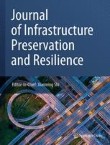Atomistic-scale investigation of self-healing mechanism in Nano-silica modified asphalt through molecular dynamics simulation
As one of the most widely used nanomaterials in asphalt modification, the nano-silica (nano-SiO2) can significantly improve the self-healing behavior of asphalt eco-friendly. However, understanding of the self-he...




